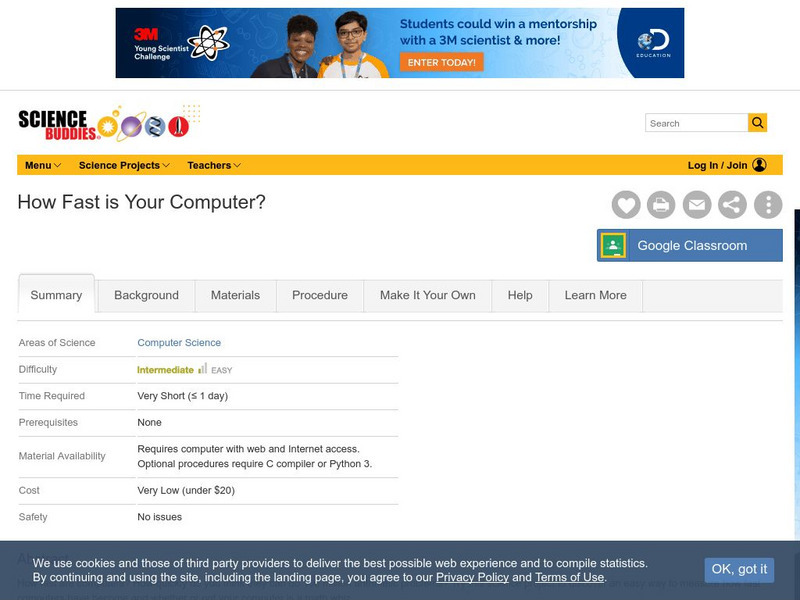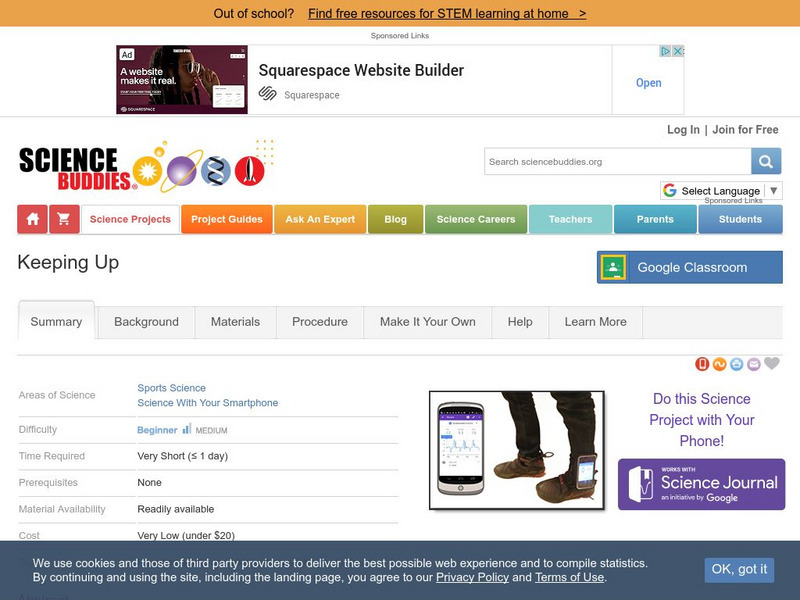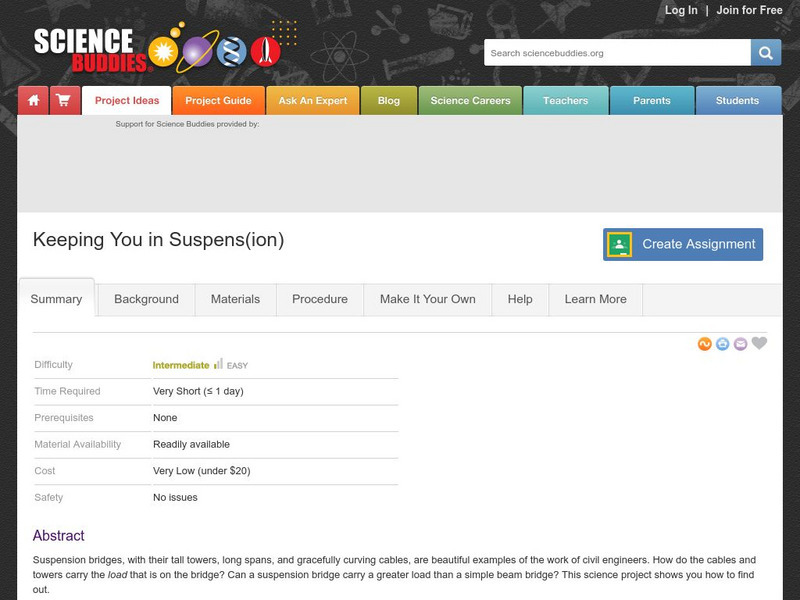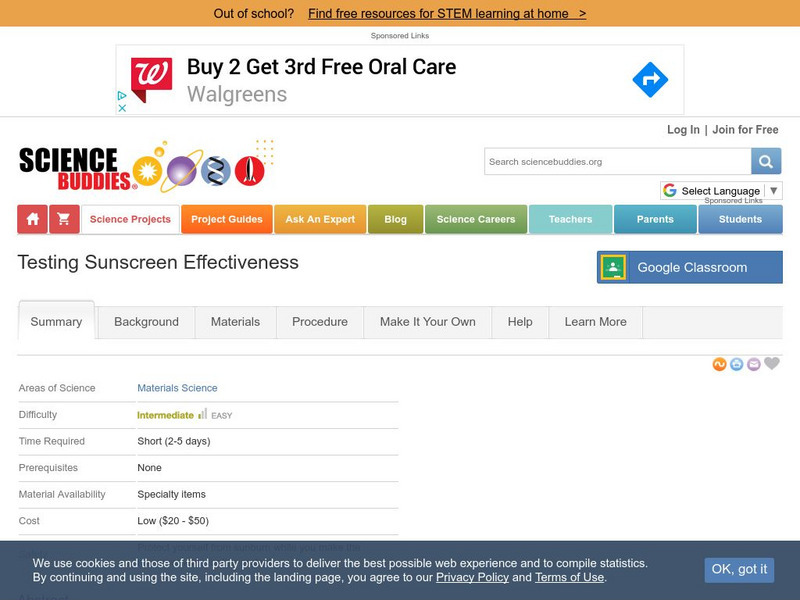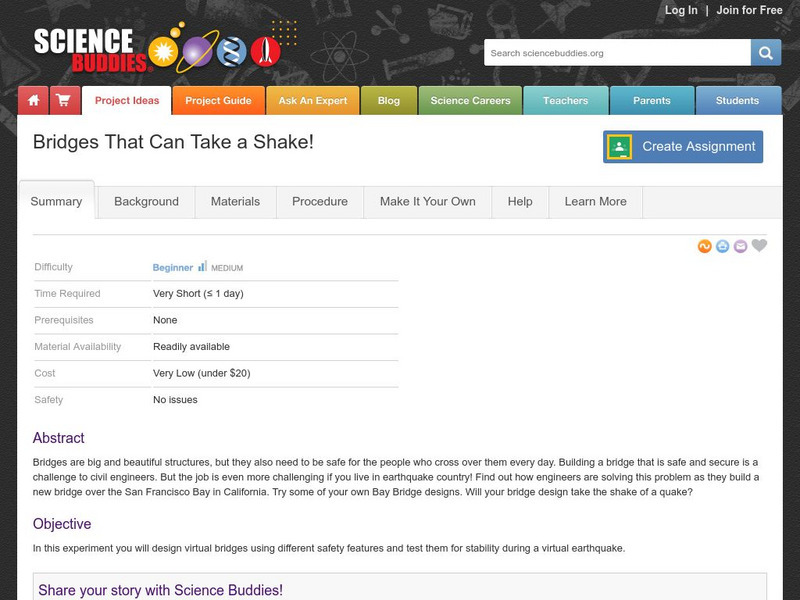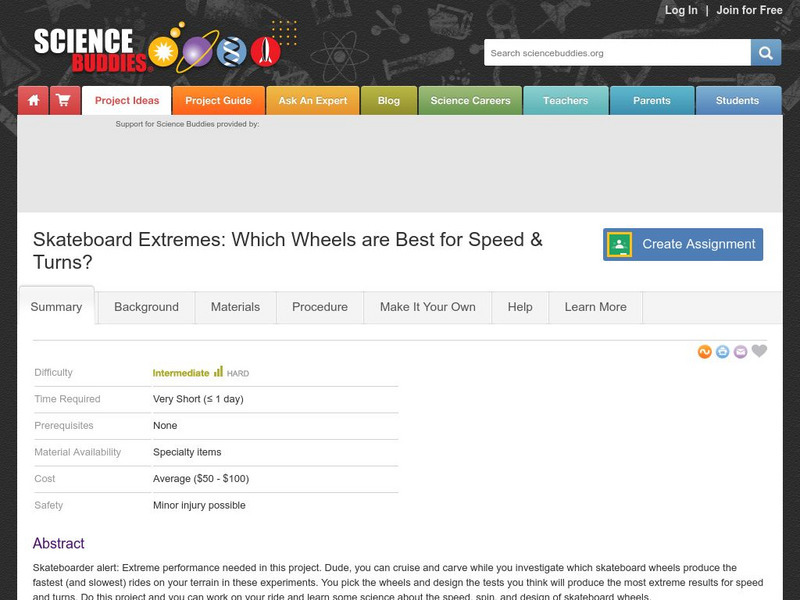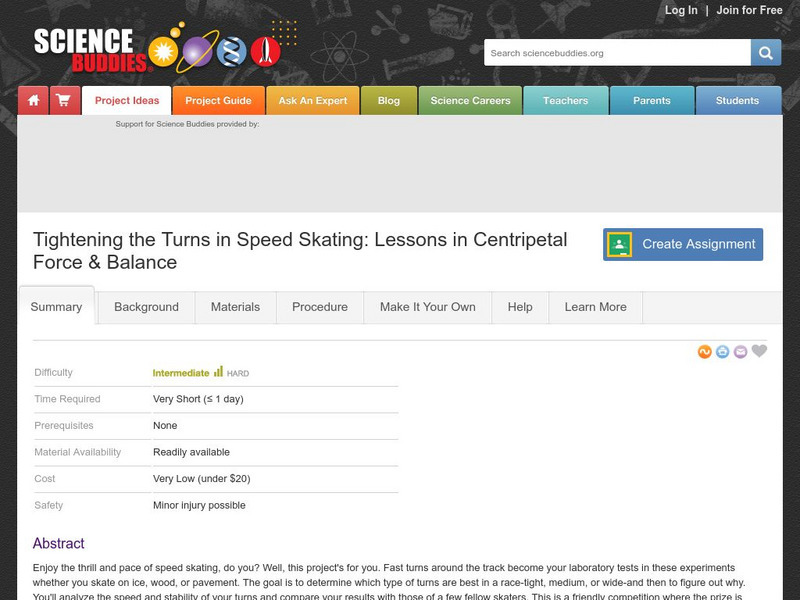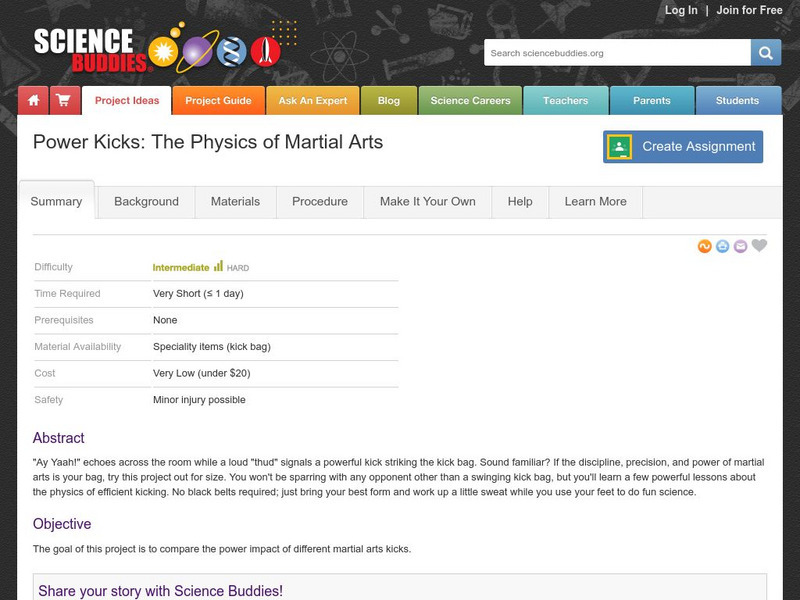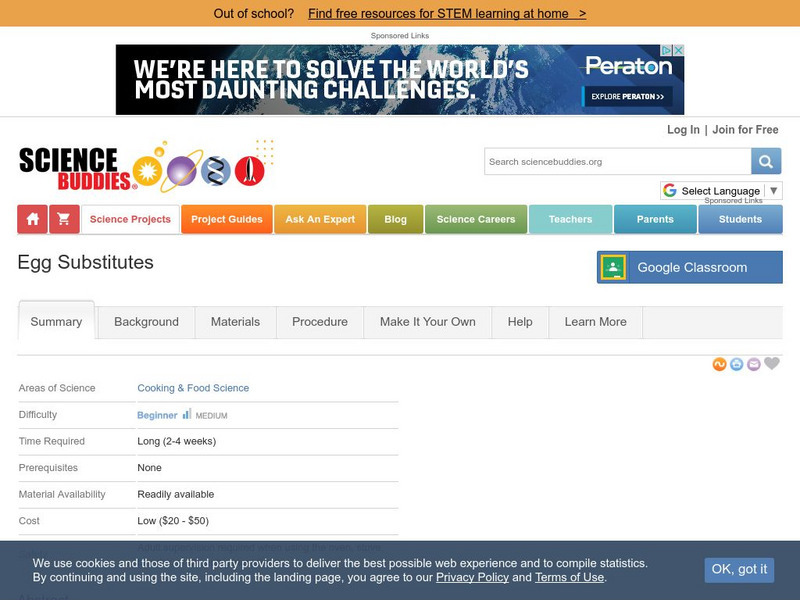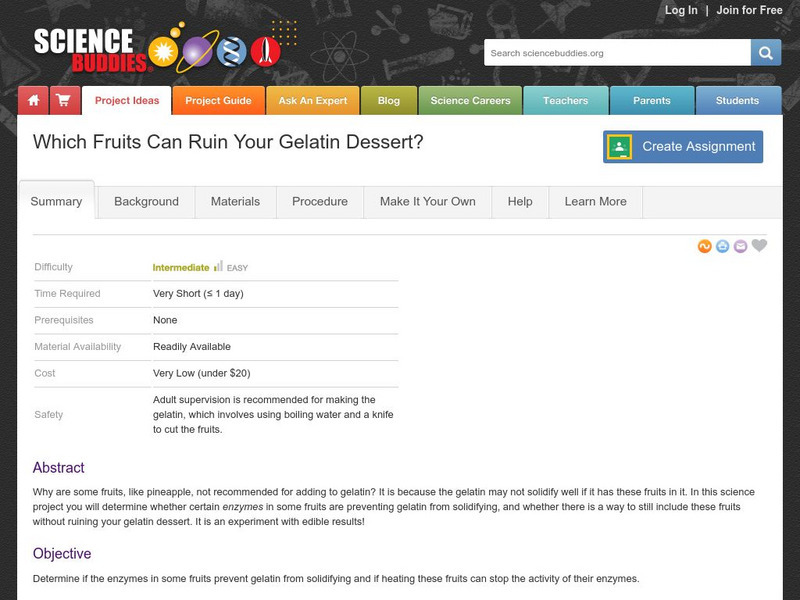Science Buddies
Science Buddies: How Fast Is Your Computer?
Computer technology continues to develop at a rapid pace. A new home computer is noticeably faster than a machine from five years ago, and dramatically faster than a machine from ten years ago. Exactly how much faster? This project will...
Science Buddies
Science Buddies: Which Stars Can You Use for Navigation
A great science project from Science Buddies that examines how ancient peoples navigated without the benefit of a GPS. Find out which stars are important in navigation in the northern and southern hemispheres. The Science Buddies project...
Science Buddies
Science Buddies: Keeping Up
Do you ever feel like you need to walk faster than your parents just to keep up with them? This is because of the difference in leg length between you and your parents. In this experiment you will test if the height of a person is...
Science Buddies
Science Buddies: The Big Dig
Even though many cities have recycling programs, a lot of trash still ends up in the dump. Find out which materials will break down and which materials won't. Will the results of this experiment change which products you often buy?
Science Buddies
Science Buddies: Font and File Size
What is your favorite font? In this experiment, you will test how the font style of the letters (or characters) in a file might change the size of the file.
Science Buddies
Science Buddies: How Many Letters?
Can you remember all of your ABC's? Computers need to "remember" letters too. Every time we use a computer to write a story, the computer needs to "remember" the letters in the story by saving them to the computer's memory as a file. In...
Science Buddies
Science Buddies: Cd Burning: Take It to the Edge
Did you know that you can tell how much information is on a CD-R without even using a computer? Find out how in this "reflective" experiment.
Science Buddies
Science Buddies: It's Raining, It's Pouring: Chemical Analysis of Rainwater
Here is an interesting project that could be approached from several different scientific angles: Environmental Science, Weather & Atmosphere, Chemistry, or Plant Biology. You can probably think of your own variations to emphasize...
Science Buddies
Science Buddies: Keeping You in Suspens(ion)
Find out the different strengths of two types of bridges, beam and suspension, by building your own. This Science Buddies science project gives you the means to find out. The Science Buddies project ideas are set up consistently...
Science Buddies
Science Buddies: Heart Health: How Does Heart Rate Change With Exercise?
Your heart starts beating before you are born and keeps right on going through your whole life. Over an average lifetime, the human heart beats more than 2.5 billion times. Keeping your heart healthy means eating right, not smoking, and...
Science Buddies
Science Buddies: Image File Types and Size
There are so many different ways to save an image file it can be mind boggling. If you want to know whether to save your favorite photo as a jpeg, bmp, gif, or tiff then try this simple experiment.
Science Buddies
Science Buddies: Heavy Metals and Aquatic Environments
You might know that lead can be toxic, and that you can get lead poisoning from eating or inhaling old paint dust. Lead is called a heavy metal, and there are other sources of heavy metals that can be toxic, too. Silver, copper, mercury,...
Science Buddies
Science Buddies: Testing Sunscreen Effectiveness
The goal of this project is to measure the effectiveness of different sunscreen products for blocking ultraviolet-A (UVB) and ultraviolet-B (UVB) rays from sunlight. This project shows you how to use a UV detector to measure rays of light.
Science Buddies
Science Buddies: Bridges That Can Take a Shake!
Building a bridge in San Francisco has to take into account the possibilites of earthquakes. This Science Buddies science project asks that you use different virtual bridge designs to withstand virtual earthquakes. The Science Buddies...
Science Buddies
Science Buddies: Computer Sleuth: Identification by Text Analysis
Here's a project where you can try your hand at being a detective with your computer. In this project you'll write a program to do some basic analysis of features of written text (for example, counting the length of each word in the...
Science Buddies
Science Buddies: Program to Check a Sudoku Solution
Sudoku puzzles have become extremely popular over the past couple of years. You can find books of puzzles for beginners to experts, and many newspapers print Sudoku puzzles daily. This project challenges you to write a computer program...
Science Buddies
Science Buddies: Fallen Arches: The Surprising Strength of Eggshells
Arches have been used for structural engineering since ancient times. This experiment tests the strength of a naturally occurring arch shape: the shell of an egg. How much weight do you think an eggshell can support?
Science Buddies
Science Buddies:skateboard Extremes:which Wheels Are Best for Speed & Turns?
You can cruise and carve while you investigate which skateboard wheels produce the fastest (and slowest) rides on your terrain in these experiments. You pick the wheels and design the tests you think will produce the most extreme results...
Science Buddies
Science Buddies: Tightening the Turns in Speed Skating
Fast turns around the track can become your laboratory tests in these experiments, whether you skate on ice, wood, or pavement. The goal is to determine which type of turns are best in a race - tight, medium, or wide - and then to figure...
Science Buddies
Science Buddies: Power Kicks: The Physics of Martial Arts
If the discipline, precision, and power of martial arts is your bag, try this project out for size. You won't be sparring with any opponent other than a swinging kick bag, but you'll learn a few powerful lessons about the physics of...
Science Buddies
Science Buddies: The Perfect Marriage of Computer Science & Medicine
Find out the real explanation for why your parents are so weird. Here is a project that lets you explore the internet to find out why your "DNA blueprint" is so important to health and disease. In this project you will use methods that...
Science Buddies
Science Buddies: Wave Blockers
What do the radio, TV, radio controlled cars, and cell phones all have in common? They all use invisible waves to transmit information. Find out which materials block radio waves, and which materials allow radio waves to pass through in...
Science Buddies
Science Buddies: Egg Substitutes
Egg allergies are not uncommon, therefore many egg substitutes are sold in order to bake, and cook recipes that call for them. In this science project idea, you'll investigate how to modify recipes so that even egg-allergic friends and...
Science Buddies
Science Buddies: Which Fruits Can Ruin Your Dessert?
Here is a basic project for investigating enzymes that prevent gelatin from solidifying. This way you can understand why it is some fruits are not recommended for inclusion when it comes to making gelatin.
Other popular searches
- Science Fair Projects
- Science Fair Project Ideas
- Science Fair Project Data
- Tsunami Science Fair Project
- Science Fair Topics
- Science Fair Projects Ideas
- Science Fair Ideas
- Science Fair Experiments
- Science Fair Project Topics
- Science Fair Exhibit
- Science Fair Presentations
- Rockets Science Fair Project
